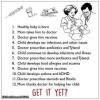
Breaking News
 Digital IDs Just Went Live - Say Goodbye To Your Privacy & Money
Digital IDs Just Went Live - Say Goodbye To Your Privacy & Money
 The United States Is Buying Stocks (China's Playbook 2.0)
The United States Is Buying Stocks (China's Playbook 2.0)
 We have no other choice but to outright refuse and deny digital ID
We have no other choice but to outright refuse and deny digital ID
Top Tech News
 3D Printed Aluminum Alloy Sets Strength Record on Path to Lighter Aircraft Systems
3D Printed Aluminum Alloy Sets Strength Record on Path to Lighter Aircraft Systems
 Big Brother just got an upgrade.
Big Brother just got an upgrade.
SEMI-NEWS/SEMI-SATIRE: October 12, 2025 Edition
 Stem Cell Breakthrough for People with Parkinson's
Stem Cell Breakthrough for People with Parkinson's
 Linux Will Work For You. Time to Dump Windows 10. And Don't Bother with Windows 11
Linux Will Work For You. Time to Dump Windows 10. And Don't Bother with Windows 11
 XAI Using $18 Billion to Get 300,000 More Nvidia B200 Chips
XAI Using $18 Billion to Get 300,000 More Nvidia B200 Chips
 Immortal Monkeys? Not Quite, But Scientists Just Reversed Aging With 'Super' Stem Cells
Immortal Monkeys? Not Quite, But Scientists Just Reversed Aging With 'Super' Stem Cells
 ICE To Buy Tool That Tracks Locations Of Hundreds Of Millions Of Phones Every Day
ICE To Buy Tool That Tracks Locations Of Hundreds Of Millions Of Phones Every Day
 Yixiang 16kWh Battery For $1,920!? New Design!
Yixiang 16kWh Battery For $1,920!? New Design!
 Find a COMPATIBLE Linux Computer for $200+: Roadmap to Linux. Part 1
Find a COMPATIBLE Linux Computer for $200+: Roadmap to Linux. Part 1
Soft Magnets Promise To Make Electric Motors 3 Times Lighter

Energy efficiency – either for electric or ICE cars – is achieved by one of these three pillars: mass, aerodynamics or powertrain. Researchers from the Carnegie Mellon University will be able to tackle two of these pillar at once with a new soft magnetic material they have developed. It would be able to make electric motors up to three or four times lighter. With the same performance.
The technical name of these magnets is "metal amorphous nanocomposite materials". The magic, or else, the science on these soft magnets, is their ability not to heat up as much as common magnetic materials. That allows them to achieve higher RPMs when applied to electric motors.
"The faster you can switch the magnetic material, the faster you can spin the motor, the more power you get out of it," said Michael McHenry, a professor of materials science and engineering that is one of the leading scientists on this research.
"If I can spin the motor at higher and higher speeds, I get more and more power. That means I can use a smaller motor for the same job."
Electric cars have a big problem mass problem with their battery packs, something that could be solved with new battery technology to increase power density, such as the one developed by IMEC. But reducing weight on electric motors is also very welcome.
The main goal of the scientists seems to be developing motors for robots, but electric cars would also benefit from it. Professor McHenry's team is also working on new electric motors designs with an axial flux approach. Similar to the one from Magnax.

 Exactly. Get it yet?
Exactly. Get it yet?

